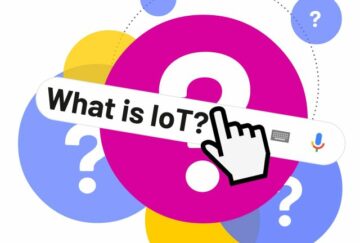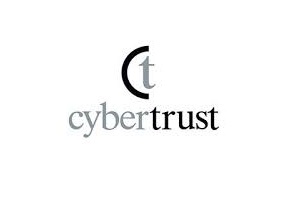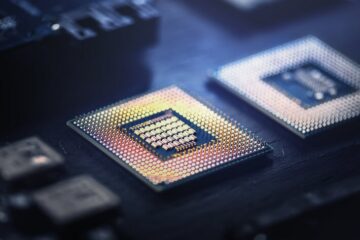WISeKey and SEALSQ Corp have announced that they plan to boost the security infrastructure surrounding semiconductors and the evolving Internet of Things (IoT) ecosystem by harnessing generative pre-trained transformer (GPT) capabilities.
WISeKey is developing a new range of Trust Services, that will take advantage of the developments in post-quantum encryption (PQE) which can be applied in real-world applications of digital signatures and encryptions using PKI (public key infrastructure) and digital certificates, such as secure communication channels, enhanced key exchanges and email security S/MIME (secure multipurpose internet mail extensions).
These services are currently based on standards that can be improved to be resilient to quantum attacks and offer backwards compatibility with existing counterparts. The implementation of PQE by WISeKey is done around the concept of ‘hybrid signatures’ which combine in a single X.509 certificate a conventional signature with a second signature using a PQE algorithm. This approach ensures backwards compatibility and opens a new horizon of cybersecurity services.
Carlos Moreira, WISeKey’s CEO, notes “WISeKey’s AI Quantum solutions mark a significant milestone in the ongoing battle to protect sensitive information from quantum attacks. By combining the power of quantum mechanics and the expertise of our multidisciplinary team, we are confident that these innovations will shape the future of cryptography and cybersecurity.”
In a post-quantum world, this technology is crucial as it protects the privacy of data even from quantum computers, which are theoretically capable of breaking many conventional encryption methods. As we see an increasing number of devices being connected to the IoT, the security risks are also amplified. SEALSQ’s post-quantum technology, hence, becomes a vital tool in maintaining the privacy and integrity of data in IoT networks.
The integration of SEALSQ with GPT capabilities can take several forms, especially for IoT:
- Secure data processing: ChatGPT can analyse and respond to encrypted data using homomorphic encryption. This allows the model to provide insights and responses while maintaining data privacy, critical in a quantum world where traditional encryption methods might not be sufficient.
- Enhanced privacy for user interactions: IoT devices often require user interactions and responses, and integrating ChatGPT with SEALSQ can allow these interactions to be securely encrypted. This means that even if the interaction data is intercepted, it remains encrypted and secure.
- Secure updates: IoT devices often require updates for their software, firmware, and AI models. By using ChatGPT with SEALSQ, these updates can be encrypted in a way that is resistant to quantum computing attacks.
- Confidential machine learning: If the machine learning model itself is integrated with SEALSQ, it can offer a new level of privacy-preserving machine learning. Model training can be done on encrypted data, and the model itself can remain confidential.
- Encrypted command and control: In an IoT context, ChatGPT could be used to interpret and respond to encrypted commands. This could allow a user to securely control IoT devices using natural language, with all communications being securely encrypted.
- Secure data sharing: IoT devices often share data with each other and with cloud-based systems. This data can be encrypted using SEAL, and then processed or analysed by GPT, without ever having to be decrypted.
Comment on this article below or via Twitter: @IoTNow_OR @jcIoTnow
<!–
–> <!–
–> <!– –>
- SEO Powered Content & PR Distribution. Get Amplified Today.
- PlatoData.Network Vertical Generative Ai. Empower Yourself. Access Here.
- PlatoAiStream. Web3 Intelligence. Knowledge Amplified. Access Here.
- PlatoESG. Automotive / EVs, Carbon, CleanTech, Energy, Environment, Solar, Waste Management. Access Here.
- BlockOffsets. Modernizing Environmental Offset Ownership. Access Here.
- Source: https://www.iot-now.com/2023/06/30/132219-wisekey-sealsq-to-harness-gpt-capabilities-for-enhancing-semiconductor-iot-security/
- :is
- :not
- :where
- 200
- 300
- a
- ADvantage
- AI
- algorithm
- All
- allow
- allows
- also
- Amplified
- an
- analyse
- and
- announced
- applications
- applied
- approach
- ARE
- around
- article
- AS
- Attacks
- based
- Battle
- BE
- becomes
- being
- below
- boost
- Breadcrumbs
- Breaking
- by
- CAN
- capabilities
- capable
- ceo
- certificate
- certificates
- channels
- ChatGPT
- combine
- combining
- Communication
- Communications
- compatibility
- computers
- computing
- concept
- confident
- connected
- context
- control
- conventional
- could
- critical
- crucial
- cryptography
- Currently
- customize
- Cybersecurity
- data
- data privacy
- data processing
- data sharing
- developing
- developments
- Devices
- digital
- done
- each
- ecosystem
- email security
- encrypted
- encryption
- enhanced
- enhancing
- ensures
- especially
- Even
- EVER
- evolving
- Exchanges
- existing
- expertise
- extensions
- For
- forms
- from
- future
- generative
- Go
- harness
- Harnessing
- Have
- having
- hence
- horizon
- HTTPS
- if
- implementation
- improved
- in
- increasing
- information
- Infrastructure
- innovations
- insights
- integrated
- Integrating
- integration
- integrity
- interaction
- interactions
- Internet
- internet of things
- iot
- iot devices
- IT
- itself
- Key
- language
- learning
- Level
- machine
- machine learning
- maintaining
- many
- mark
- max-width
- means
- mechanics
- methods
- might
- milestone
- model
- models
- multidisciplinary
- Natural
- Natural Language
- networks
- New
- news
- Notes
- now
- number
- of
- offer
- often
- on
- ongoing
- opens
- or
- Other
- our
- page
- PKI
- plan
- plato
- Plato Data Intelligence
- PlatoData
- power
- privacy
- processed
- processing
- protect
- provide
- public
- Public Key
- Quantum
- quantum computers
- quantum computing
- Quantum Mechanics
- range
- real world
- remain
- remains
- Reports
- require
- resilient
- resistant
- Respond
- responses
- risks
- Second
- secure
- securely
- security
- security risks
- see
- semiconductor
- Semiconductors
- sensitive
- Services
- several
- Shape
- Share
- sharing
- signature
- Signatures
- significant
- single
- Software
- Solutions
- standards
- such
- sufficient
- Surrounding
- Systems
- Take
- team
- Technology
- that
- The
- The Future
- the security
- their
- then
- These
- they
- things
- this
- to
- tool
- tools
- traditional
- Training
- transformer
- Trust
- Updates
- used
- User
- using
- via
- vital
- Way..
- we
- which
- while
- will
- with
- without
- world
- X
- Your
- zephyrnet













